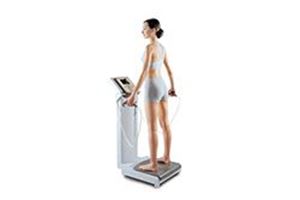By: Joy Laws, pH Labs Founder
Ditch the scale! Focus on body composition.
Your weight in pounds just doesn’t tell you enough. Looking at how much muscle, fat and water is in those pounds tells you much more about your health. This at least provides a launching pad for further investigation.
You can’t judge a book by its cover.
Many people believe that we can look at a person and assess whether he or she has too much body fat. It is safe to assume that an obese person may have an excessive amount of body fat. On the other hand, not all skinny or “healthy weight” people are metabolically healthy. They too can have an excessive amount of body fat. I’m sure you have heard of the term “skinny fat.” A better medical term for essentially the same thing is “normal weight obesity.” So if someone has a very healthy weight but has 40 percent body fat and low muscle mass, it’s not the weight that needs to change – it’s the body composition. This is why the number on the scale is not the best measurement of health.
This is where a body composition test comes in.

A body composition test is the most comprehensive test you can take when it comes to determining if you are not only at a healthy weight but also a healthy makeup of fat and other materials in the body. The Body Composition assessment uses a machine called the InBody 720. It is noninvasive, and within minutes you will get your total body fat and body fat percentage, lean body mass, BMI, total body water and basal metabolic rate. You’ll walk away knowing exactly how much fat you need to lose or gain, how much muscle you need, how many calories your body burns and how hydrated you are.
Some benefits of a pH Body Composition assessment
- Determines whether the body is properly hydrated.
- Monitors changes associated with specific diseases that alter body composition.
- Assesses the effectiveness of nutrition programs and exercise interventions.
- Estimates ideal body weight and suggests dietary recommendations and exercise prescriptions.
- Monitors growth, development, maturation and age-related changes in body composition, especially in children.
- Provides relevant data that can be used to prevent chronic diseases.
- Optimizes athletic performance and evaluates the effectiveness of training regimens for athletes.
- Identifies health risks associated with total body fat or excessive accumulation of intra-abdominal fat.